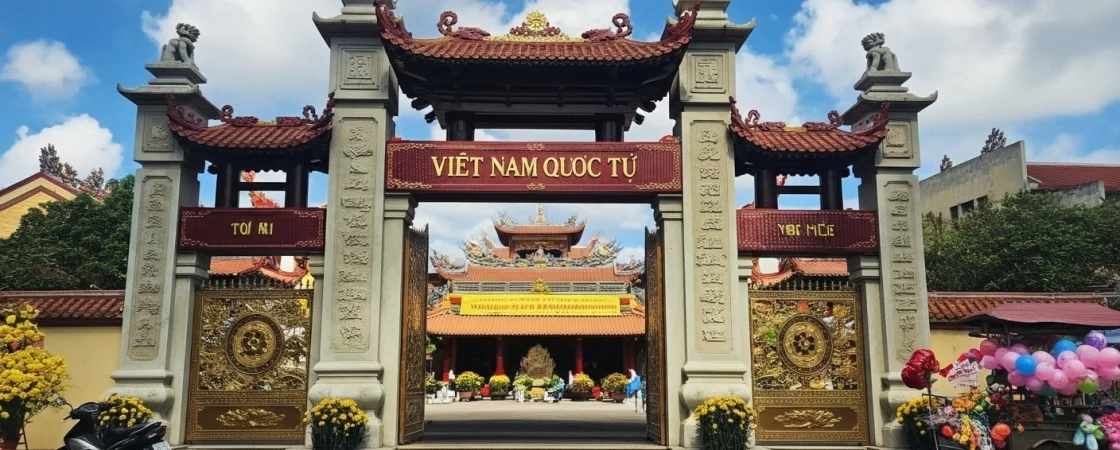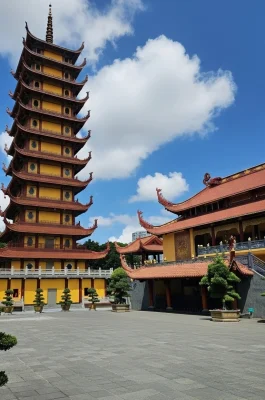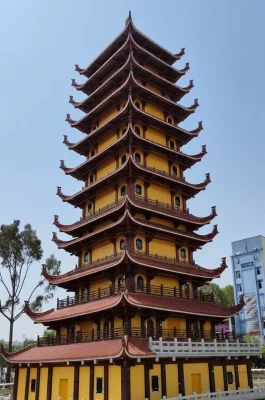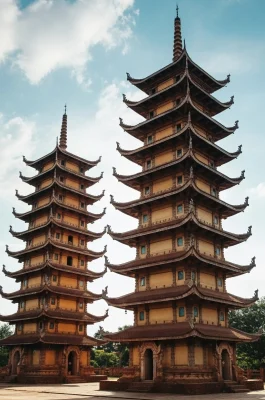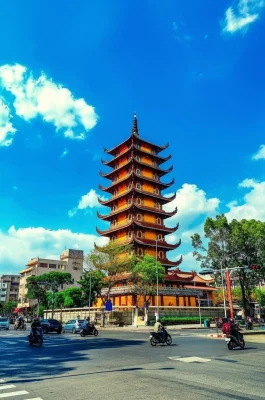Việt Nam Quốc Tự is one of the most prominent and largest pagodas in Ho Chi Minh City, standing as a testament to the history and unification of Vietnamese Buddhism. It is a striking modern structure that retains deep spiritual and cultural significance.
I. General Overview and Significance
Historical Symbol of Unity: The pagoda was originally built in 1964 by the Unified Buddhist Church of Vietnam (the predecessor of the Vietnam Buddhist Sangha) to symbolize the spiritual unity of Vietnamese Buddhists, particularly during a tumultuous political period in the 1960s.
Architecture: Modern Grandeur: Unlike older pagodas, Việt Nam Quốc Tự features a massive, contemporary, and impressive architectural design. Its scale is vast, intended to serve as a major national center.
The Tallest Stupa: The pagoda is most famous for its stunning Đa Bảo Tower (Many Jewels Tower). This towering, 13-story octagonal stupa is one of the tallest Buddhist structures in Vietnam, standing at 63 meters high. Each of its 13 floors is said to represent the unification of the 13 Buddhist associations that existed in the past.
Heart of the City’s Sangha: After extensive renovations and reconstruction (completed around 2017), Việt Nam Quốc Tự now serves as a major administrative and spiritual center for the Vietnam Buddhist Sangha in Ho Chi Minh City.
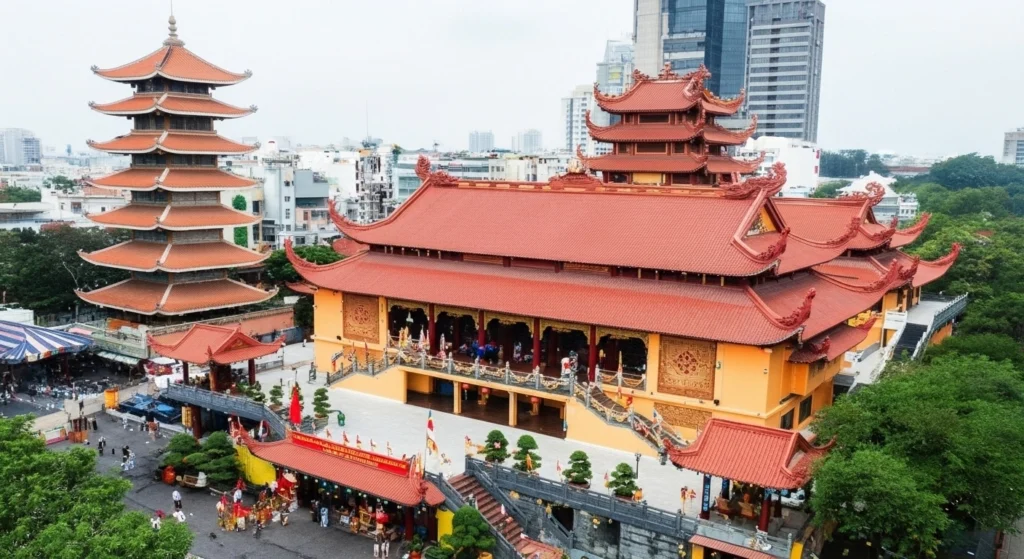
II. What to See & Experience
Đa Bảo Tower (13-Story Stupa): Visitors are often allowed access to the lower floors of the tower. It is an architectural marvel and a deeply symbolic structure. The stupa is also said to enshrine the sacred relic of the “immortal heart” of the Venerable Thích Quảng Đức, who famously self-immolated in 1963 to protest persecution.
The Main Hall (Chánh Điện): The expansive main worship hall is located on the upper floors and houses impressive Buddha statues, including a 35-ton, 7.5 meter tall bronze statue of Sakyamuni Buddha, reportedly the largest in a main hall in Vietnam.
Peaceful Retreat: Despite its central location and large scale, the complex offers spacious, clean, and peaceful courtyards, perfect for contemplation and a break from the city’s intensity.
Cultural Events: The pagoda is a focal point for major Buddhist festivals and ceremonies throughout the year, especially on the 1st and 15th days of the lunar month.
III. Practical Visitor Information
| Practical Information | Details |
|---|---|
| Address | 244 Đường 3 Tháng 2, Ward 12, District 10, Ho Chi Minh City |
| Opening Hours | Daily in two sessions: 7:30 AM – 11:00 AM and 3:00 PM – 7:30 PM. Hours may be extended on major Buddhist holidays. |
| Entrance Fee | Free of Charge |
| Visitor Notes | Modest attire is required (shoulders and knees covered). Photography is generally restricted inside the main hall. The best experience is often found in the late afternoon. |
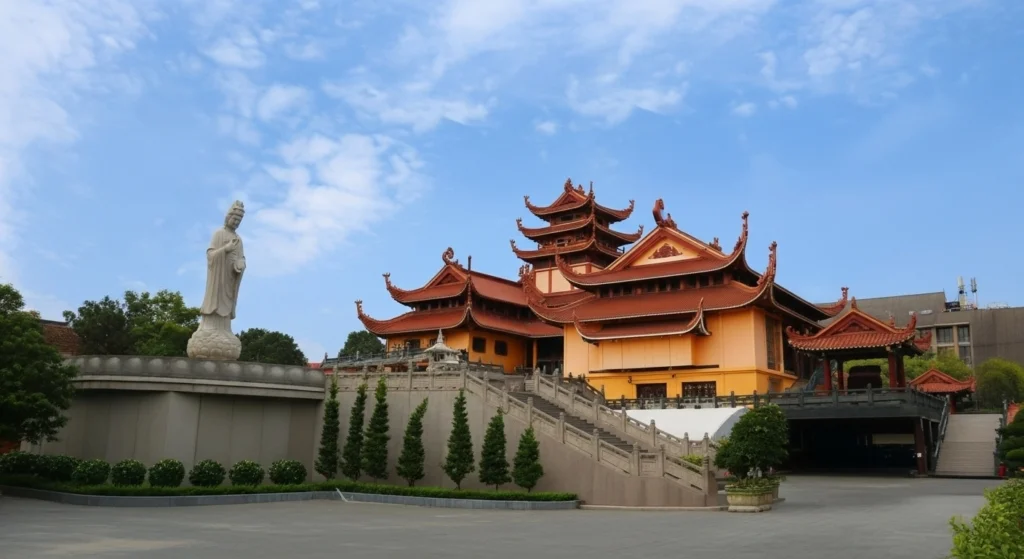
IV. Traveler's Tips
Dress Code: Always wear respectful and modest clothing. Shoulders and knees must be covered. Avoid sleeveless shirts, shorts, or mini-skirts.
Behavior: Maintain silence or speak in a low voice. This is an active place of worship. Do not smoke, litter, or bring non-vegetarian food into the temple grounds.
Footwear: Be prepared to remove your shoes when entering the main worship halls.
Photography: Photography is generally allowed in the courtyards and outside, but be discreet, especially when taking photos of praying devotees or inside the main altar area.
